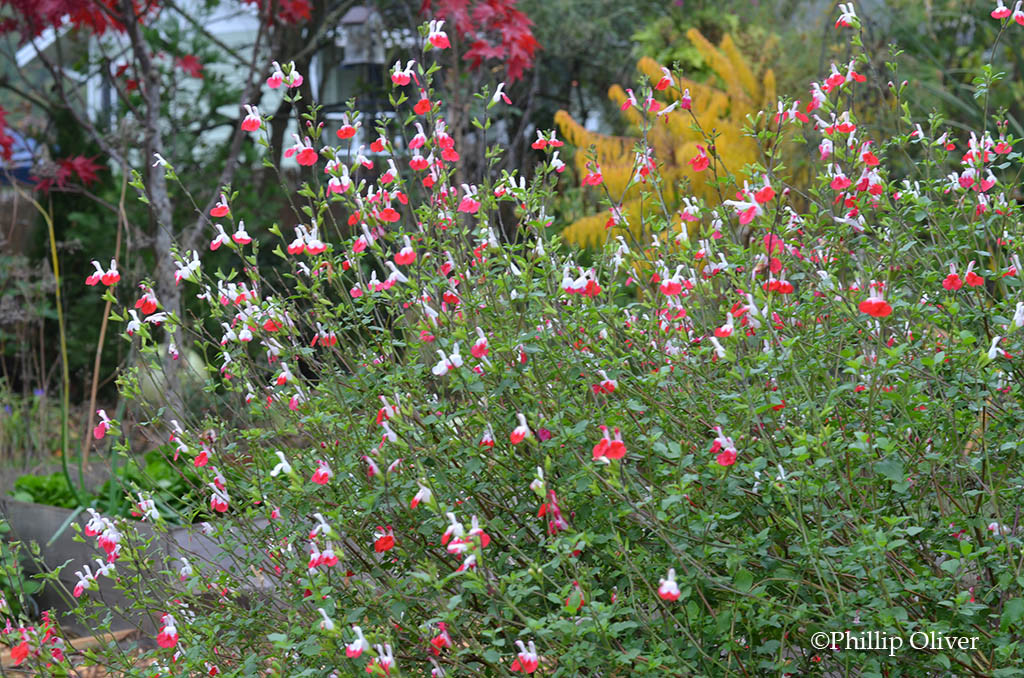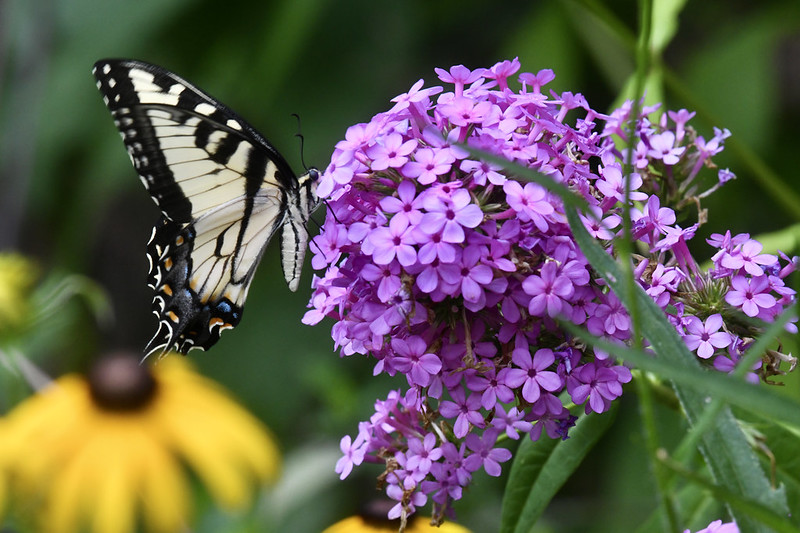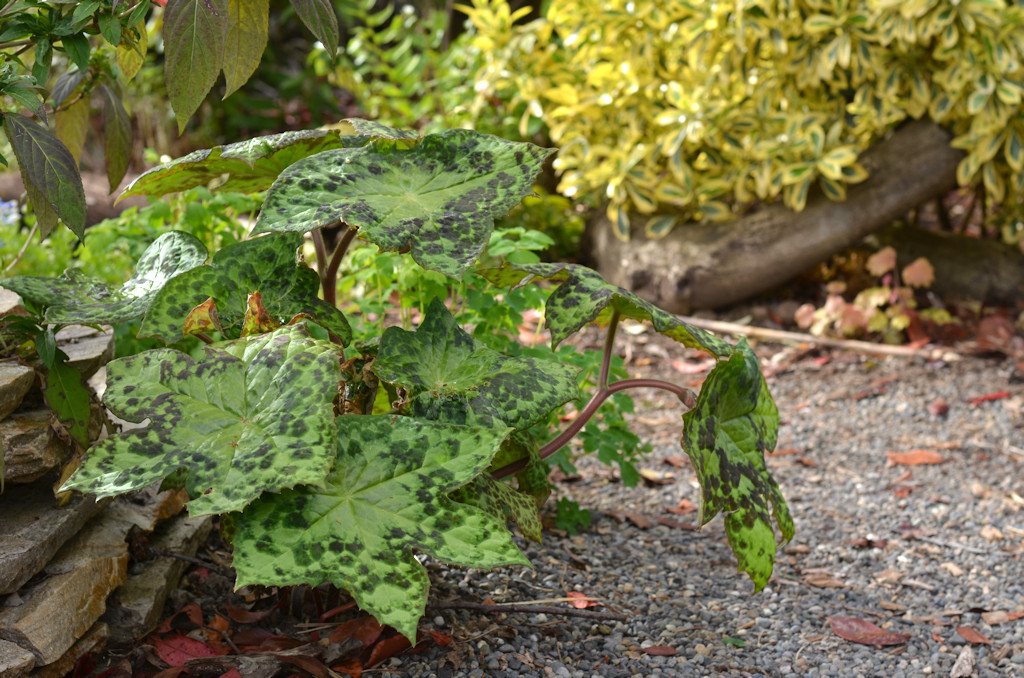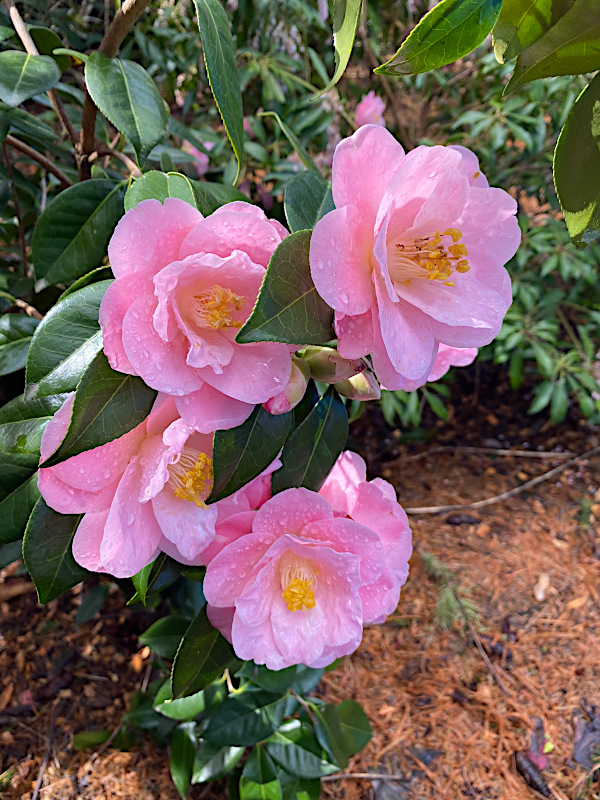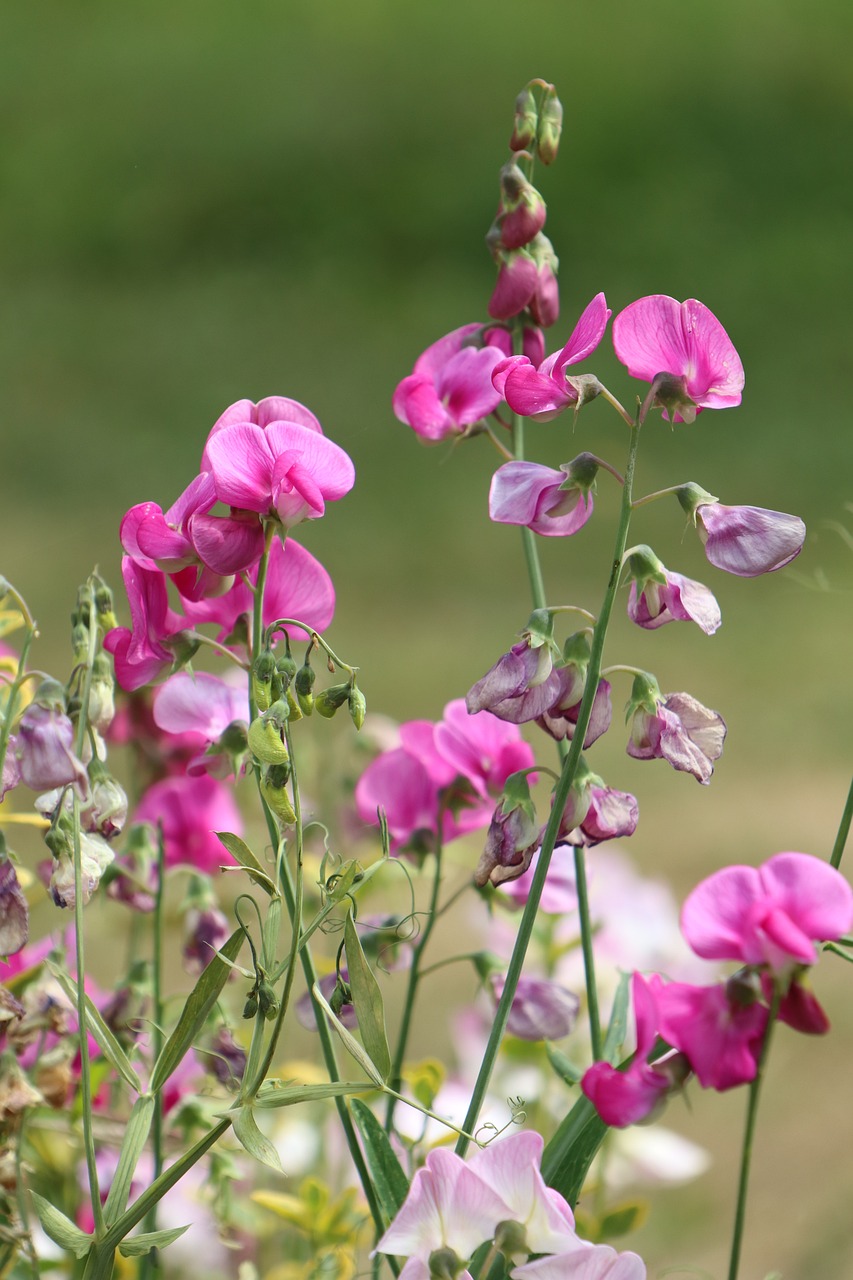Salvia ‘Hot Lips’
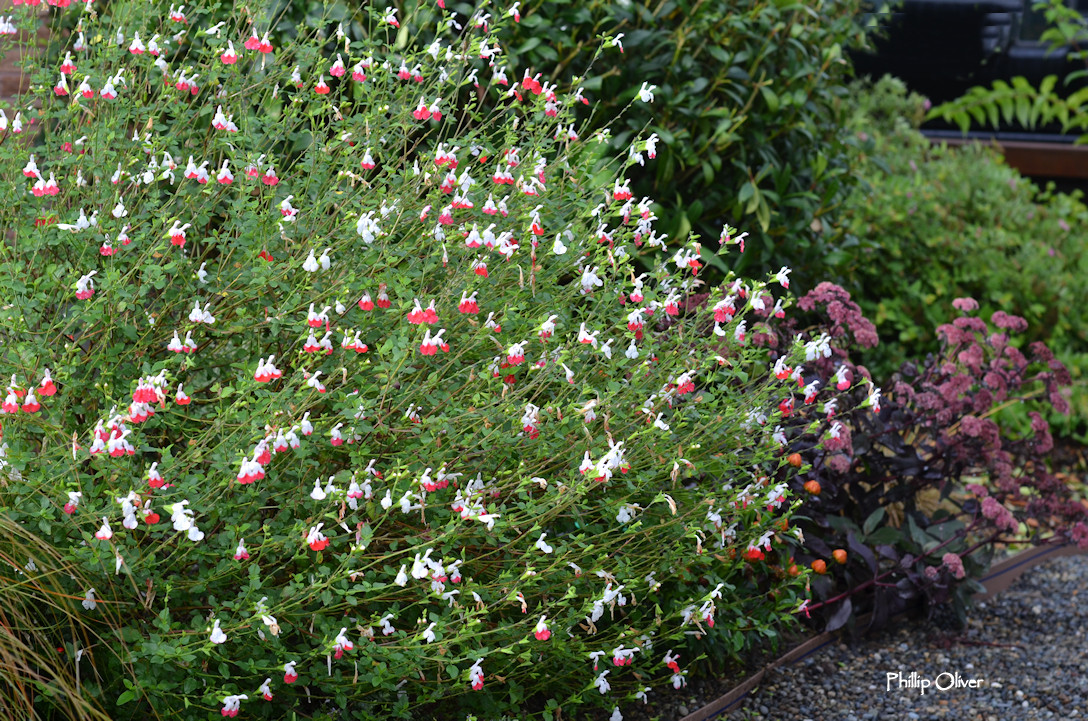 They are many beloved perennials on the market and it is no stretch of the imagination to openly declare that Salvia ‘Hot Lips‘ is perhaps the most popular at the moment. The plant promptly sells out quickly with each shipment we receive and even customers who are not gardening experts know it by name.
They are many beloved perennials on the market and it is no stretch of the imagination to openly declare that Salvia ‘Hot Lips‘ is perhaps the most popular at the moment. The plant promptly sells out quickly with each shipment we receive and even customers who are not gardening experts know it by name.
Salvia (also known as “sage”) is a heavily populated plant group with dozens (or more likely hundreds) of varieties. ‘Hot Lips’ quickly shot to the front of the line when it was introduced in the early years of this century.
In 1999, Richard Turner of the Strybing Arboretum in San Francisco was visiting friends when he noticed the unusual salvia growing in a pot outside housekeeper Alta Gracia’s apartment. She was uncertain of its origins but noted that is came from Mexico. With permission, Turner took cuttings and years later, the plant was introduced to the public and quickly became a favorite with gardeners everywhere.
The plant is unique in that it displays a multitude of bi-colored (white and red) flowers, some pure red, some pure white and some bi-colored. The degree of color appears to coincide with the age of the stems and temperature, beginning with pure red in spring and progressing to pure white in later summer. At times, all three color variations appear at once. The effect is magical and hummingbirds cannot resist the flowers.
Salvias thrive in lean soils and sulk with too much attention. Give them average soil and don’t add a lot of compost or other rich soil ammendments. There is one requirement – the soil much be well-drained. This is especially important for the plant to survive the winter months. A sunny location is best but partial shade is fine too. My clump (pictured above) lives on the north side of my house where it gets mostly shade during the winter months and on-and-off periods of sunlight during the summer. Salvia loves hot weather and as the temperatures rise, the plants get larger, easily reaching 3 feet tall and wide by summer’s end. The flowers appear non-stop up until frost. Once established, salvia is drought-tolerant.
It is tempting to cut the plant back after frost but I would recommend that you wait and do this at the end of winter. It isn’t a super hardy plant and cutting back the stems can cause frozen participation to collect in the hollow stems and kill them. They will remain semi-evergreen through the winter months. Before new growth begins in the spring, shear the entire plant down to the ground as unpruned plants quickly become unkempt and ragged. They are slow to start new growth in the spring so don’t give up on it too soon. And if your plant doesn’t come back, treating it as annual and replanting is worth it.
Newer varieties similar to ‘Hot Lips’ are appearing every year. If you’d rather have a plant that doesn’t get quite as large as ‘Hot Lips’, check out ‘Little Kiss’ which looks similar but stays below 2 feet.

